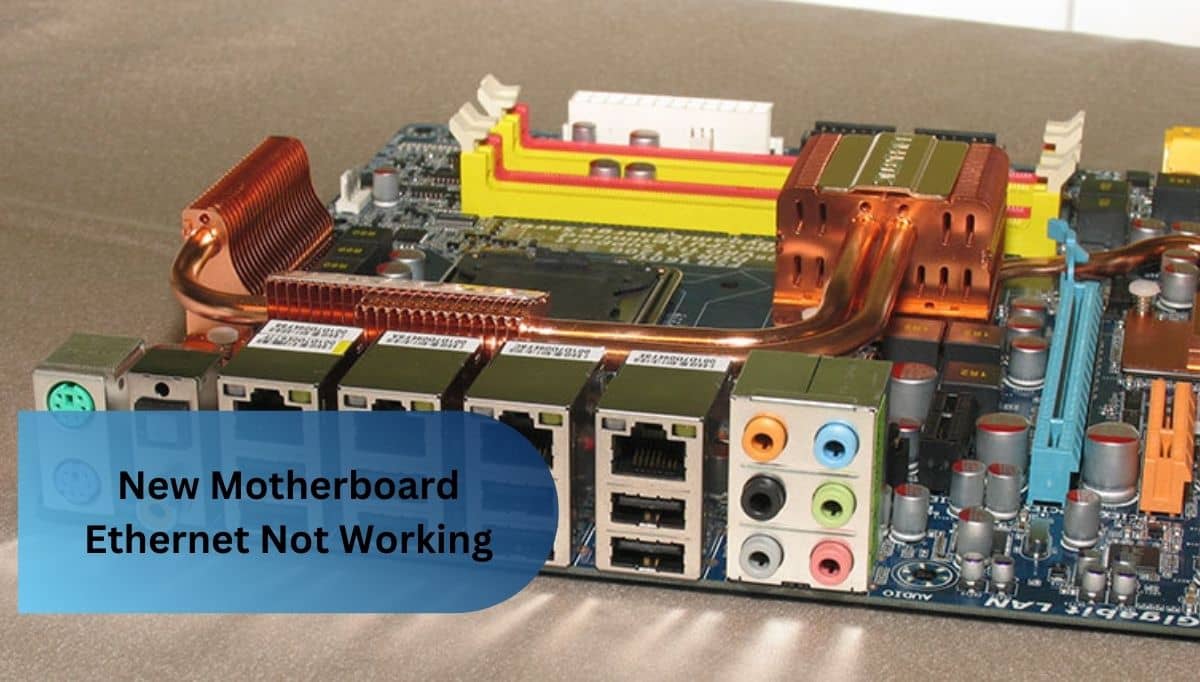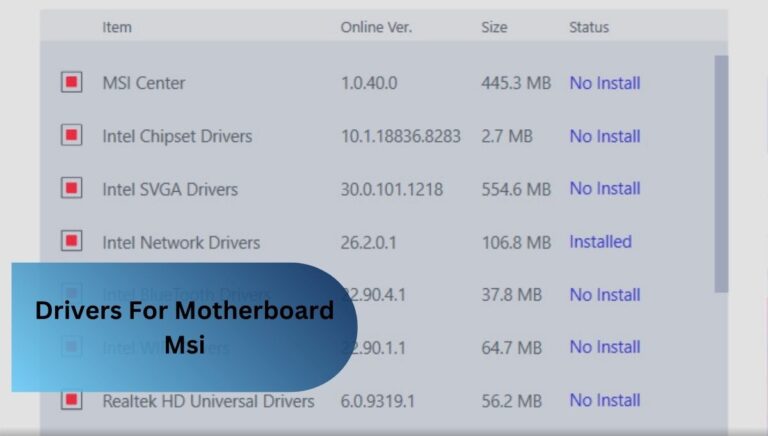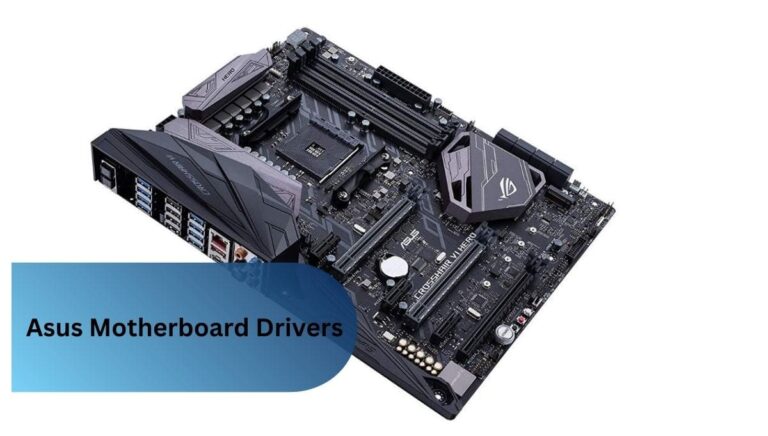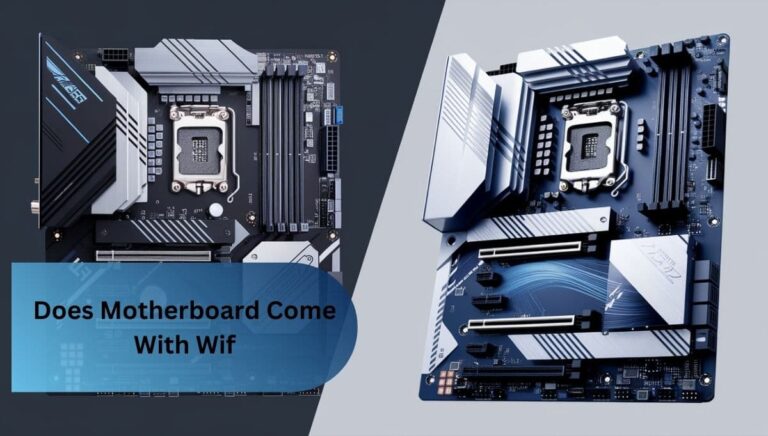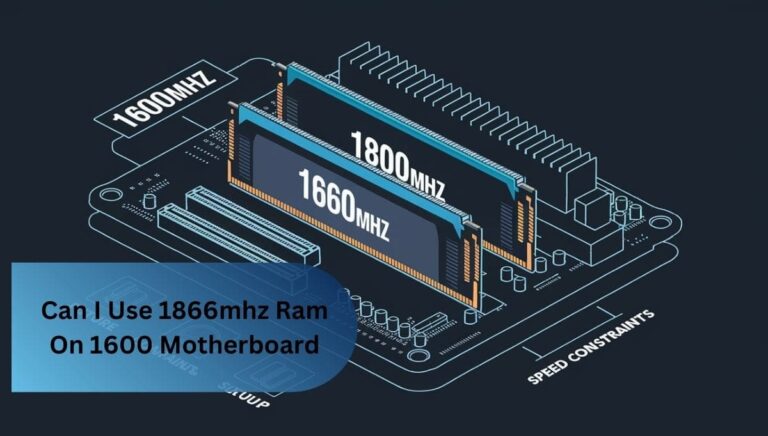New Motherboard Ethernet Not Working – A Complete Guide!
When my new motherboard’s Ethernet didn’t work, I discovered the issue was outdated drivers. I fixed it by downloading the latest drivers on another device and installing them via USB.
A new motherboard’s Ethernet may not work due to outdated drivers or incorrect BIOS settings. Ensuring the drivers are updated and checking the BIOS for enabled LAN options often resolves the issue.
In this article, we covered troubleshooting steps for fixing Ethernet issues on a new motherboard, such as checking cables, updating drivers, and enabling settings in BIOS. We also explored common symptoms and solutions for resolving the problem.
Introduction To New Motherboard Ethernet Not Working
Facing the issue of a New Motherboard Ethernet Not Working can be frustrating, especially when everything else seems to be functioning perfectly. A New Motherboard Ethernet Not Working often arises from compatibility challenges, missing drivers, or incorrect setup during installation.
Troubleshooting a New Motherboard Ethernet Not Working requires checking both software and hardware aspects to identify the exact cause. Understanding why a New Motherboard Ethernet Not Working happens can save time and ensure a smoother setup process for your system.
Check Ethernet Cable And Port Connections
Checking Ethernet cable and port connections is a simple yet essential step when troubleshooting network issues. Ensure the Ethernet cable is securely plugged into both the computer and the router or modem, as loose connections can disrupt the signal.
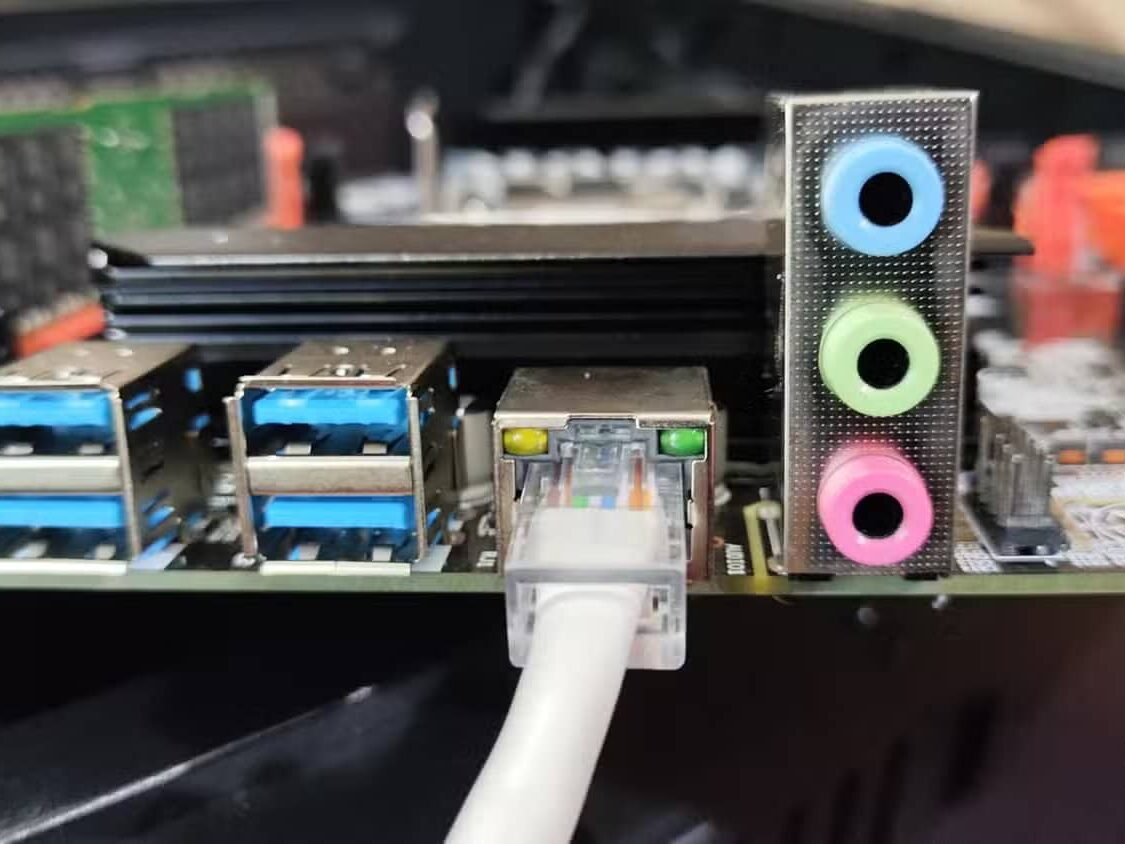
Inspect the cable for any visible damage, such as fraying or bent connectors, which can affect its functionality. Similarly, verify that the Ethernet port is clean and free from dust or debris that might obstruct the connection. Properly secured and functional cables and ports are crucial for a stable network connection.
1. Update Ethernet Drivers:
Updating Ethernet drivers ensures your system can communicate properly with the hardware. Outdated drivers may cause connectivity issues, which can be resolved by installing the latest version from the motherboard manufacturer’s website.
Read Also: Can A Motherboard Bottleneck – A Compressive Guide!
2. Enable Ethernet in BIOS:
To enable Ethernet in the BIOS, access the BIOS settings during startup by pressing the designated key, often Delete or F2. Locate the LAN or Ethernet option, ensure it is enabled, then save the changes and exit.
How To Fix Ethernet Port Not Working On Motherboard?
1. Check Ethernet Cable and Connections:
Inspect the Ethernet cable to ensure it is securely connected and free from visible damage, such as cuts or fraying. Test the cable with another device to confirm it is working properly.
2. Enable Ethernet in BIOS:
To enable Ethernet in BIOS, restart your computer and press the BIOS access key, usually Delete or F2. Once in the BIOS, find the Ethernet or LAN setting and make sure it is enabled before saving and exiting.
3. Update Ethernet Drivers:
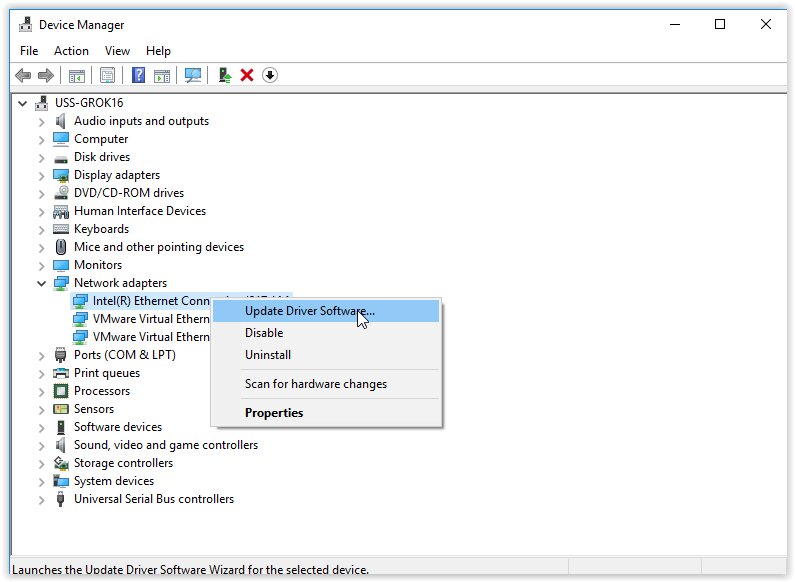
Updating Ethernet drivers is essential to fix connection issues, as outdated or missing drivers can cause the port to malfunction. Simply download the latest drivers from the motherboard’s website and install them to restore proper functionality.
4. Test Ethernet Port Functionality:
Testing Ethernet port functionality involves checking for any visible damage or dust inside the port, which could interfere with the connection. Try using a different Ethernet cable or port to see if the issue persists, helping to pinpoint whether the problem lies with the cable, port, or motherboard.
5. Reset Network Settings:
Resetting network settings can help fix issues caused by incorrect configurations or conflicts. This process restores your system’s default network settings, potentially resolving the Ethernet connection problem.
6. Check Power Management Settings:
Checking power management settings ensures your Ethernet adapter isn’t being turned off to save power. In Device Manager, uncheck the option that allows the computer to turn off the device, which can help resolve connection issues.
7. Use an External Ethernet Adapter:
If your motherboard’s Ethernet port is malfunctioning, using an external Ethernet adapter is a quick workaround. Simply plug the adapter into a USB port, and it will provide a working Ethernet connection without needing to fix the onboard port.
8. Seek Professional Assistance:
- If troubleshooting steps don’t resolve the issue, consider consulting a professional technician for a deeper inspection.
- A technician can identify if the motherboard’s Ethernet port is defective or needs replacement.
- Contacting the motherboard manufacturer’s support may help if the issue is covered under warranty.
- Professional assistance ensures that no further damage occurs during troubleshooting or repairs.
- An expert can also offer guidance on the best course of action for long-term solutions.
Typical Signs Of A Motherboard Ethernet Port Failure
1. No Internet Connection:
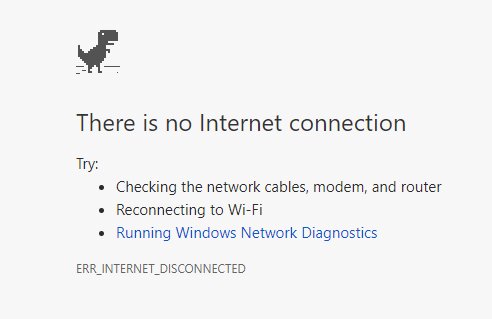
- The computer is unable to access the internet despite being connected to the router via Ethernet.
- Your browser or apps show errors like “Unable to connect” or “No internet access.”
- Other devices connected to the same network work fine, but your computer remains offline.
- You might see a “No Internet” symbol on the taskbar or network settings page.
- The device may try repeatedly to obtain an IP address but fails to connect to the network.
2. Limited or No Connectivity:
- Your device may show a “Limited” or “No Connectivity” message, indicating the network connection is not fully established.
- The computer can still recognize the cable but fails to assign an IP address, causing a lack of internet access.
- Other devices on the same network may work fine, but the affected device struggles to connect properly.
- Sometimes, this issue resolves after restarting the router, but it may persist if the port or cable is faulty.
- This symptom often points to a problem with either the Ethernet adapter or network configuration settings.
3. Flashing or Solid LED Lights:
Flashing or solid LED lights on the Ethernet port usually indicate network activity, with blinking lights showing data transfer. If the lights are off or stuck on one color, it suggests a connection issue or a malfunctioning port.
4. Network Adapter Not Detected:
If the network adapter is not detected, it may not appear in Device Manager, or show a warning icon. This suggests the Ethernet port or driver is malfunctioning or improperly installed.
5. Slow or Unstable Connection:
A slow or unstable Ethernet connection can result from a malfunctioning port or a damaged cable, causing frequent disconnects. It can also indicate network configuration issues or outdated drivers on the motherboard.
6. No Response from Port When Plugged In:
- When you plug the Ethernet cable into the port and there’s no reaction, it could mean the port isn’t detecting the connection.
- No LED lights or flashing indicators suggest the port isn’t receiving power or signaling the device.
- The device may not show any network connection or prompt that it’s connected to a wired network.
- If the Ethernet cable works fine on another device, the issue likely lies with the port itself.
- This could indicate a physical issue with the port, such as a loose connection or internal damage.
Check For Windows 11 Or 10 Compatibility Issues
Compatibility issues with Windows 11 or 10 can sometimes cause Ethernet problems on a new motherboard. Ensure your operating system is up to date, as updates often fix network driver conflicts. Check if the motherboard’s drivers are compatible with your version of Windows. In some cases, a simple update or reinstalling the network drivers can resolve the issue.
Read Also: White Light On Motherboard – Its Causes & Fixes!
Asus Motherboard Not Detecting Ethernet
If your ASUS motherboard isn’t detecting Ethernet, the issue may lie with outdated or missing drivers. Start by checking if the Ethernet adapter is enabled in the BIOS settings. Sometimes, resetting network settings or reinstalling the drivers can solve the problem. If these steps don’t work, the Ethernet port itself could be damaged, and further troubleshooting or professional help may be needed.
New Msi Motherboard Ethernet Not Working
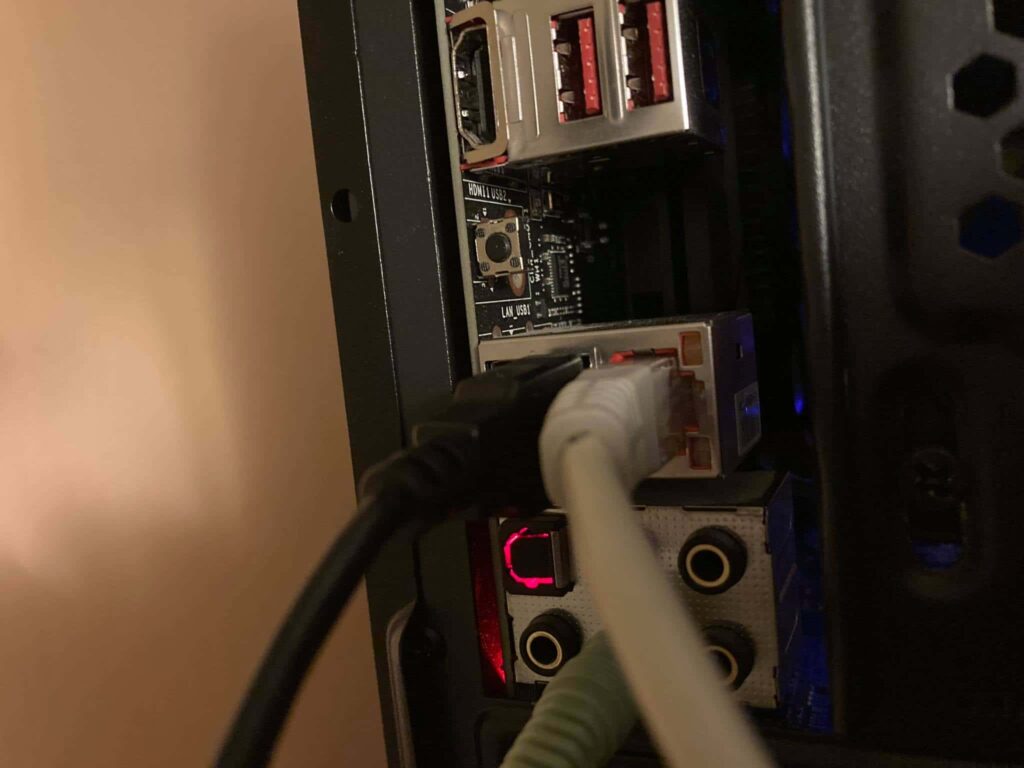
- Check the Ethernet cable and ensure it’s securely plugged into both the motherboard and the router or modem.
- Verify that the Ethernet port is enabled in the BIOS settings and is set to “Auto” or “Enabled.”
- Update the network drivers to the latest version from MSI’s official website or through Device Manager.
- Inspect the port for any visible damage or debris that may be obstructing the connection.
- Run network troubleshooting tools on your operating system to identify and resolve any configuration issues.
- If the problem persists, consider resetting your network settings or using an external USB-to-Ethernet adapter.
FAQ’s
1. How do I enable Ethernet in the BIOS?
During system startup, press the BIOS access key (usually Delete or F2). Navigate to the LAN or Ethernet settings and ensure it is enabled.
2. Can a faulty Ethernet cable cause connection issues?
Yes, a damaged or improperly connected Ethernet cable can prevent the motherboard from detecting the connection. Testing the cable with another device can help identify this.
3. How do I update Ethernet drivers on my new motherboard?
Go to Device Manager, find your network adapter, and right-click to select “Update Driver.” You can also download the latest drivers from the motherboard manufacturer’s website.
4. What should I do if the Ethernet port is not recognized by my PC?
Check if the Ethernet adapter is enabled in the BIOS, and ensure the correct drivers are installed. If the issue persists, there may be a hardware problem with the port.
5. How can I tell if my motherboard’s Ethernet port is damaged?
If there are no LED indicators when the Ethernet cable is plugged in, or if the network fails to connect, it may indicate a damaged port.
Conclusion:
When your new motherboard’s Ethernet isn’t working, the issue often boils down to simple troubleshooting steps like checking cable connections, enabling Ethernet in BIOS, or updating drivers.
If these solutions don’t work, consider testing the hardware for faults or resetting network settings. Patience and systematic checks can usually resolve the problem, ensuring a stable and reliable connection.
Read More:
